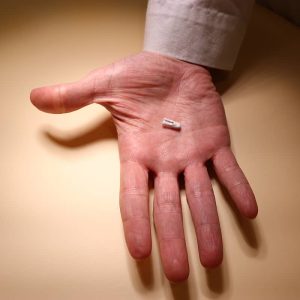What is Mitral Regurgitation?
Mitral regurgitation (MR) is the leakage of blood backward through the mitral valve each time the heart contracts. When this happens, patients can experience significant shortness of breath and their activity tolerance may be greatly reduced.
MitraClip
Saint Francis Healthcare System offers the MitraClip procedure for those experiencing mitral regurgitation. Patients are evaluated for the MitraClip procedure with cardiac ultrasound imaging completed at Saint Francis Healthcare System’s Heart Center. The U.S. Food and Drug Administration approved the MitraClip device for percutaneous (through the skin) repair of primary (degenerative) MR in 2013 and it is successfully treating patients who are considered too high risk for standard surgical mitral valve repair that requires open chest surgery. Primary mitral regurgitation is related to age, a birth defect, or an underlying heart disease.
The FDA recently approved the MitraClip device for the treatment of secondary (functional) MR. Functional mitral regurgitation may be caused by heart disease that leads to an enlarged left ventricle. It could also be caused by a structural heart abnormality of the valve along with other types of heart disease. Although Medicare has not yet given coverage approval for functional MR, the MitraClip procedure is expected to soon be approved to treat both forms of mitral regurgitation in select patient populations.
Cardiologists Steven J. Joggerst, MD and Rebecca L. Smith, MD worked to develop a robust program to serve the area.
While heart surgery is the standard option for treatment of this level of mitral regurgitation, MitraClip is a great option for those who are not a candidate for open heart surgery. This procedure is for patients who did not have an option before. Once you put the MitraClip in, it reduces the backflow of blood from the impaired valve, thus reducing symptoms.
After the procedure, healing involves the puncture site in the vein in the leg. The patient is kept for observation overnight and can go home the next day. Within a week or a few days, the patient is back to doing what he/she did before.

